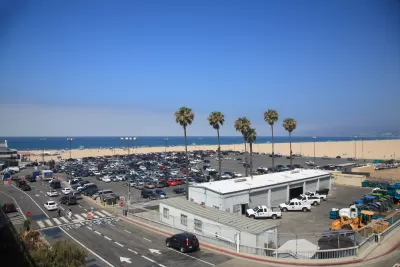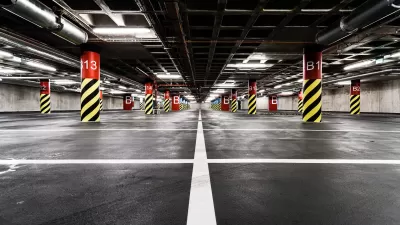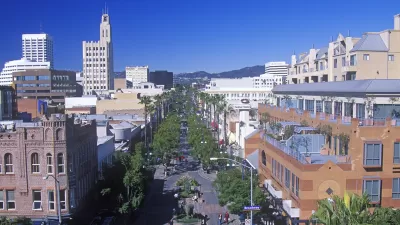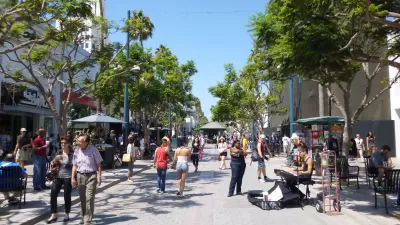After noting the heated rhetoric that surrounds development in Santa Monica, especially during election season, Jason Islas reveals claims of the city's overdevelopment to be true—if we're talking about cars.

"Since 2003, Santa Monica saw a net increase of about about [sic] 230 new multi-family housing units a year. Considering that the regional population grew from about 9.7 million in 2003 to more than 10 million people in 2013, the rate of housing construction in Santa Monica is relatively low, especially considering the location’s desirability," reports Jason Islas.
Islas also reveals that commercial development has lagged behind the cap proposed by a failed 2008 anti-development initiative called Prop T, or the "Residents’ Initiative to Fight Traffic."
Planning is at least partly responsible for the city's development constraints: "Santa Monica’s award-winning Land Use and Circulation Element (LUCE) specifically prohibits increased density in about 96 percent of the city. The vast majority of the proposed development is slated to replace currently underdeveloped land either in the city’s downtown or the formerly industrial Bergamot Area, where the [defeated by NIMBYs] Transit Village project was proposed."
Santa Monica's ostensibly environmentalist and liberal residents have their true interests revealed by the kicker of the article: "Since 2003, according to City officials, 2,751,266 net new square feet of parking has been built in the city, for both commercial and multi-family residential projects. That’s 250,115 square feet of parking each year, or about 760 standard-sized (about 330 square feet, if you include space needed to maneuver your car) parking spaces."
FULL STORY: SANTA MONICA AND THE MYTH OF OVERDEVELOPMENT

Alabama: Trump Terminates Settlements for Black Communities Harmed By Raw Sewage
Trump deemed the landmark civil rights agreement “illegal DEI and environmental justice policy.”

Planetizen Federal Action Tracker
A weekly monitor of how Trump’s orders and actions are impacting planners and planning in America.

Why Should We Subsidize Public Transportation?
Many public transit agencies face financial stress due to rising costs, declining fare revenue, and declining subsidies. Transit advocates must provide a strong business case for increasing public transit funding.

Understanding Road Diets
An explainer from Momentum highlights the advantages of reducing vehicle lanes in favor of more bike, transit, and pedestrian infrastructure.

New California Law Regulates Warehouse Pollution
A new law tightens building and emissions regulations for large distribution warehouses to mitigate air pollution and traffic in surrounding communities.

Phoenix Announces Opening Date for Light Rail Extension
The South Central extension will connect South Phoenix to downtown and other major hubs starting on June 7.
Urban Design for Planners 1: Software Tools
This six-course series explores essential urban design concepts using open source software and equips planners with the tools they need to participate fully in the urban design process.
Planning for Universal Design
Learn the tools for implementing Universal Design in planning regulations.
Caltrans
Smith Gee Studio
Institute for Housing and Urban Development Studies (IHS)
City of Grandview
Harvard GSD Executive Education
Toledo-Lucas County Plan Commissions
Salt Lake City
NYU Wagner Graduate School of Public Service





























